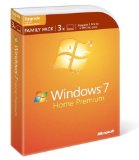 Do you hate spam? I’m not talking about the food, but the seemingly endless stream of annoying commercial emails that flood most people’s inboxes.
Do you hate spam? I’m not talking about the food, but the seemingly endless stream of annoying commercial emails that flood most people’s inboxes.
The content of the messages range from mortgage rates to enlarging various body parts, to pornography, and their numbers grow every day — up to 500 percent in the eighteen months prior to March, 2003. As of April, 2004, over eighty percent of all email was spam.
It fell dramatically since then, but in 2006, especially in the second half of the year, the amounts of spam has skyrocketed. Some experts estimate that spam accounts for over 90% of all emails!
Spam is named after an old Monty Python skit which took place in a diner where everything on the menu had spam in it. A chorus keeps chanting a song about spam, drowning out conversations. Years later, this reminded someone of how email in your inbox can get lost in all of the junk mail, so they called it spam and the name stuck.
It can be hard to avoid getting your email address on somebody’s list. It’s not uncommon for many people to receive 50 to 100 pieces of spam in a single day – I know some people who get over 300 a day! And the problem is growing worse.
Fortunately there are ways for people to reduce the amount of spam they get. Here are a few tips:
* Never try to unsubscribe or ask to be removed. Those emails may include a link or a reply address to unsubscribe, but 95% either simply don’t work, or you're just telling the spammers that they have a live one.
* Never order anything advertised in spam, visit the website, or in any way respond to the ad. Spammers send out millions of emails at a time, and it costs them almost nothing. Every order or click through to their website just encourages the spammers to send more and more.
* Try to avoid entering your email address on websites as much as possible, and if you do, consider getting a second email account with Yahoo mail or a similar service. That way, you can enter that address instead of your main email. Most websites offering contests, joke lists, free greeting cards, etc. harvest and sell your email address.
* Never sign an online guestbook. As an experiment I recently created a new email address and entered it on about five guestbooks I found with a Google search. Within 24 hours I was getting spam, and it grew to dozens a day within a week.
* Just opening an unsolicited ad while connected to the internet can alert spammers that they have a live address, so if your email application has a “work offline” option, often found in the file menu, select it before opening suspect emails, or disconnect from the internet completely.
If you use a web-based email service like Yahoo Mail, check your mail options for a setting to turn off graphics in emails, or to display mail in plain text only. This helps keep the spammers from knowing you've opened the message.
* Avoid forwarding emails to large numbers of people. Not everyone realizes that when you forward a message, the email addresses of everyone who receives the message is visible to every person who reads it. If any of the recipients is a spammer, or if one of a friend's computer is infected by certain viruses, they can harvest all of those addresses, including yours.
If you do send an email to multiple people, you can avoid revealing email addresses by entering addresses in the BCC (Blind Carbon Copy) area instead of To or CC — this will hide the list of addresses from everyone else.
If you're sending a message from somebody on to others, you should copy and paste just the message into a new email window rather than hitting the forward button — this trims the message down and protects the privacy of others.
* To deal with the spam you already receive, most email programs allow you to create “filters” or “rules” that move incoming email into a specified folder or even right into the trash.
Setting filters up can be complicated, but the newer versions of many email programs, including Mozilla Thunderbird and Mac OS X Mail make it much easier.
The programs recognize patterns in spam, and use your address book as a white list of legit senders. Any spam that shows up in your inbox can be marked (and automatically deleted) with a click, and the more spam you mark, the better the program gets at automatically taking care of them so you end up seeing a lot less junk than you used to. Many internet providers also provide a spam filter which blocks email before it gets to your computer. The problem with this is that they often block legitimate mail and you may never know about it. Because of this, I recommend using filtering software on your own computer, such as the two programs I just mentioned.
Ultimately, spam is a fact of modern life, and it's next to impossible to avoid all of it, mostly because of what other people are doing with your email. If your current email address is about to collapse from the amount of spam you get, you might be forced to get a new one.
After that, if you follow the tips above, you'll have a good chance of keeping it under control.
Author - Worth Godwin is a computer coach with a dozen years' experience helping computer users of all levels, and has also worked for many years "in the trenches" as a hardware and software tech, solving real-world computer problems.
Worth has also been studying the human mind, and how people learn, since the early 1990s. He draws upon all of this experience, as well as his English and writing degrees, to teach people in a unique way with explanations that really make sense.
In 2006, Worth began putting his easy lessons together as video lessons on CD, carefully designed to make it easy to learn at your own pace, for an affordable price. These lessons let you see each click of the mouse and every step of the lesson, while you hear Worth's clear explanations.
Individual CDs as well as entire courses are available for both Windows and Macs, and everything comes with a full 1-year no-hassle money back guarantee.
More information, and testimonials from happy clients, are available at http://www.WorthGodwin.com



Leave a Comment